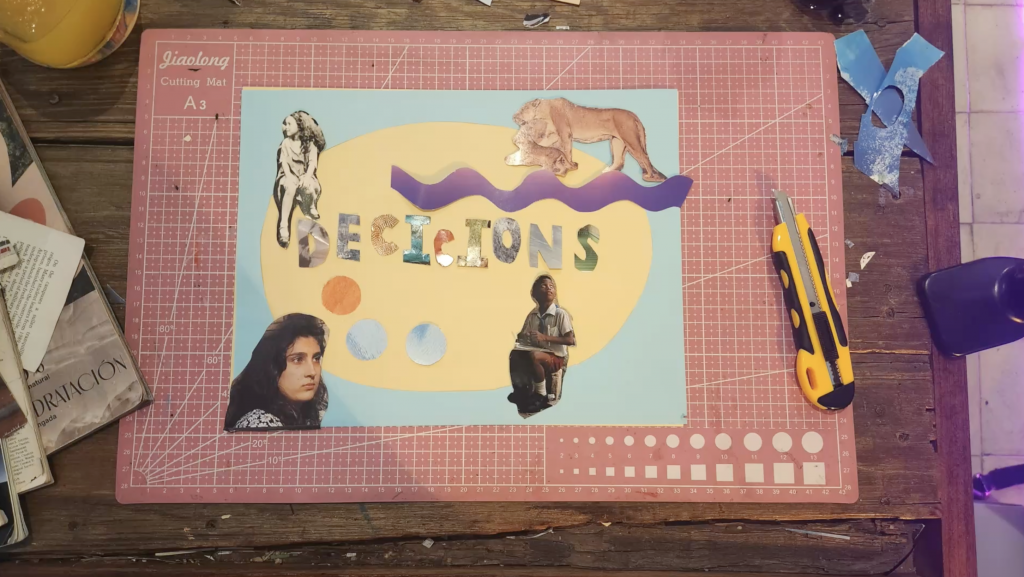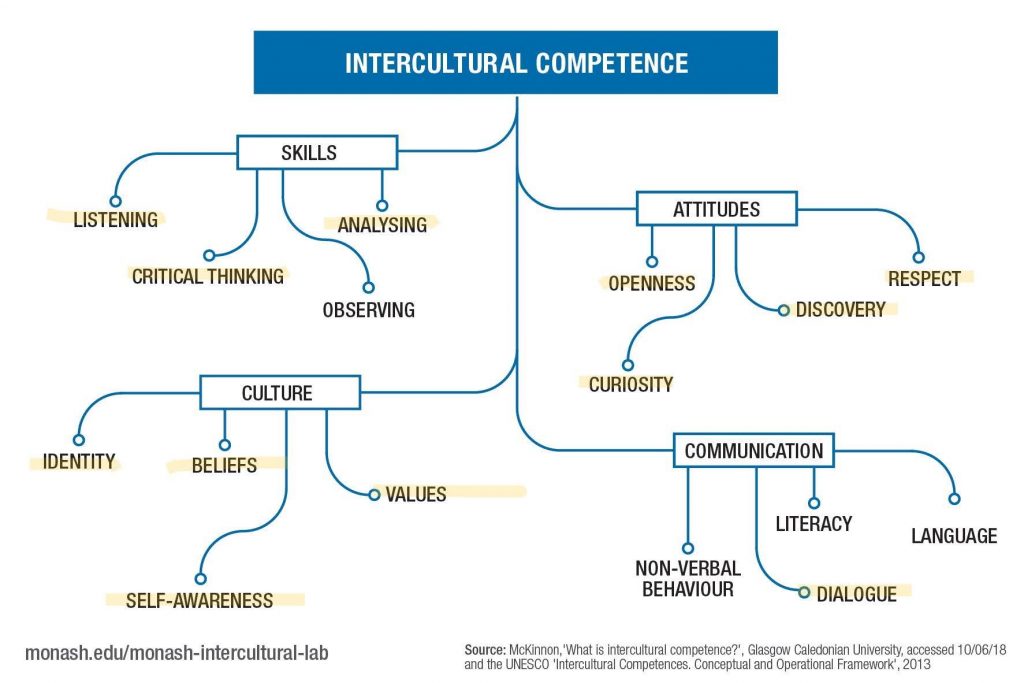Following on from my idea to build an archive of decisions, for my U3 I’ve chosen to curate a single conversation about a decision. I wanted this to be a conversation, rather than an interview, and so I decided to conduct it with someone who has made a similar decision to me: the decision to leave my home country. Here is my first draft, created for formative feedback this week.

Marsha has provided some general feedback learnings to help us reflect at this point in time.
- Getting beyond problem solving to create a space of complexity through ambiguity.
How I’m doing this already:
- I had the problem of the conversation having been an hour but the submission needs to be around 15 minutes. I could have chosen a 15-minute section but instead I’ve heavily edited the whole conversation. Thoughts aren’t always seen fully through to their conclusions; distinct exchanges are brought together. This condensing and paraphrasing of the conversation creates complexity and ambiguity.
- I had the problem of needing visuals because I chose not to record us speaking (I experimented with recording our hands/coffee cups/our reflection in a window, but it didn’t work well). Choosing to do the collage has created complexity as meaning is generated through the collage and its connection to the audio, which contains a lot of ambiguity.
- Using quote cards are a way to create space/pauses in the video, to focus attention on what’s been said – problem solving. Choosing to use the quote card like a chapter heading, so you read the quote before you hear it in conversation, creates a connection with what has just been said, and leaves it open to interpretation by the viewer – creating ambiguity.
How could I push this further?
- I haven’t yet edited the visuals so that they connect with moments in the audio. The act of collage does this in a general way but there’s a lot more scope to make connections that add layers of complexity.
- I’m interested in the ambiguity of whether the two voices agree or not. As a listener, you’re constantly aware of whether or not you agree with what’s being said. On the surface, the two voices generally appear to be in agreement with each other, but this is a norm of conversation – we avoid disagreement. I didn’t always fully agree with what Pippa was saying but I didn’t say this explicitly. Are there ways that I can edit to hint at the presence of this complexity without positioning myself in an authorial place of judgement?
2. More effectively embodying intercultural competencies in general.

Most relevant (highlighted): Dialogue in communication; identity, beliefs, values, self-awareness in culture; openness, curiosity, respect and discovery in attitudes; listening, critical thinking, analysing in skills.
I’ve had the conversation now, so the question is how can I demonstrate my performance of these intercultural competencies during the conversation through my edit? And the similar but slightly different question: How can I enact these intercultural competencies in my editing?
The intercultural elements of this video are the fact that Pippa and I are from different places – our conversation was an act of intercultural communication – and that we were discussing an intercultural experience (moving abroad).
The moment when I felt most aware of this during our conversation was when we discussed moving for our male partners’ work, which is a decision that’s caused me some internal conflict. I knew before the conversation that I wanted to broach this subject and I thought a lot about how I should go about it. I wasn’t confident that Pippa and I were going to view things the same way, as I might have been (at least more so) if we shared a cultural background. I didn’t want to make Pippa feel like I was judging her actions. Based on her response, I don’t believe she did feel judged but I also didn’t get the impression she worried in the same way I did. I’ve kept this part of the video fairly true to the conversation, to show how I navigated it and Pippa’s response.
I think in general, we both demonstrated openness, curiosity and acceptance of each other’s views and experiences in the conversation. I also don’t think our ways of viewing the world are wildly different. But maybe it would be useful to listen to the conversation again through the lens of divergence – listening for times when we were negotiating difference and thinking about how these are represented in the edit. I don’t want to point to these in a heavy-handed way – I don’t want to manufacture moments of tension when they didn’t exist – but I do want to create space for the viewer to reflect on how difference is negotiated and to see the grey areas that exist in a conversation like this.
3. More effectively evidencing the cross-cutting competency in question – normative.
Learning Outcome 1: Demonstrate advanced critical awareness in the ethics of creative outputs produced through collective and individual agency. (AC: Process) (UNESCO ESD: Normative Competency)
The normative competency is about values – about justice, equity, responsibility. In relation to this curated conversation, it’s about showing an awareness of the ethics of creative output and the ethics of conversation. I should be asking what impact does this video have on the world? On Pippa?
I’ve included in my edit already how I approached Pippa for this conversation, how I considered her needs, and made sure she was fully able to consent to the process.
I’ve also been thinking about what impact my edit will have on her – trying to remain true to what she expressed and considering what is/isn’t appropriate to include. Pippa was very forthcoming during our conversation. One of the reasons I was keen to speak to her in the first place was her open nature. I’d only met Pippa once before – with a group of women who were all strangers – and she’d opened up about personal things during this conversation. My impression was that she would be comfortable recording a personal conversation with me, that she might even enjoy it and find the process useful and interesting. Her nature has also made me feel confident including these details in my edit, although I’ve tried to do so in a balanced way, not dwelling on particularly heavy, personal or difficult topics. Do I need to clearly evidence my thought process here like I’ve done earlier in the video? I feel like this would intrude on the flow of the videos, so I hope the edit speaks for itself in this way.
I haven’t yet shared my video with Pippa, but I think I might. It would be useful to hear her reflections on whether I have stayed true to her sentiments and how she feels about the prospect of this condensed version of our conversation being shared with (select) others. I do feel a bit nervous about the prospect though – what if she does feel misrepresented or uncomfortable?
4. More effectively grappling with and evidencing consideration of the assessment criteria.
The assessment criteria for this task is focused on ‘process’: how well we evidence that we’ve experimented and critically evaluated methods, results and their implications in a range of complex and emergent situations.
What my process has been:
- I reflected and blogged in order to develop a theme/idea.
- I had preparatory conversations with artists/collaborators around my theme to develop my ideas and work through the ethical concerns.
- I thought a lot about my ‘ask’ – how I was inviting people into this conversation.
- I recorded conversations about decisions with people in order to develop how I wanted to conduct myself in this conversation and to test the process of recording.
- After recording the conversation, I experimented with different approaches to editing – working with the audio and transcript to try out different flows of the conversation; editing in introductions/context through voice/text; introducing chapter/pull quotes.
- I experimented with visuals to go along with the recording – I tried out a few different ideas before settling on and developing the idea of a film of me making a collage. This connects with the fact I met Pippa at a collage cafe and that collage is all about displacement/changing the context of an image or word, and the process is one of simple, consecutive decision-making. It also allows me to build on the themes of the audio through visual references – to tell a story.
How I’m evidencing this/what more I can do:
- In my introduction to the video, I tell the story of developing this idea – where it came from/why and my process; of why and how I invited Pippa for a conversation.
- I hope the results will demonstrate a process built on experimentation and critical evaluation – if it’s a well-edited video that makes use of different editing techniques. The audio is clearly a heavily edited conversation as it doesn’t have the natural meandering flow of conversation – it’s too concise. The video is a separate piece of work and considered in its own right. This too will be heavily edited in a way that builds on themes and points made in the audio.
5. Evolving your signature intercultural practice (IP) – What are the hallmarks? What don’t you do? Content/form/context/more…
When I think about the work I’ve produced for MAIP so far, some connecting styles/themes are:
- All my work has been rooted in personal, lived experience and research-based storytelling (this is informed by my background in journalism and work with artists who produce co-created work with individuals/communities).
- In terms of my intercultural practice, I’m preoccupied at the moment with what it means to be a British person living in Mexico.
- There’s an earnest, thoughtful, self-reflective quality to it; I aspire for it to embody values of respect, responsibility and equity.
- I use words in a careful, sometimes poetic way and my work is concisely edited. It centres clear, simplified expression and I take authorial control in this respect.
- I’ve worked a lot with physical media – particularly paper-based.
- My style is informed by my communications work, often borrowing from the aesthetics of communications materials and building on these skills.
Leave a Reply